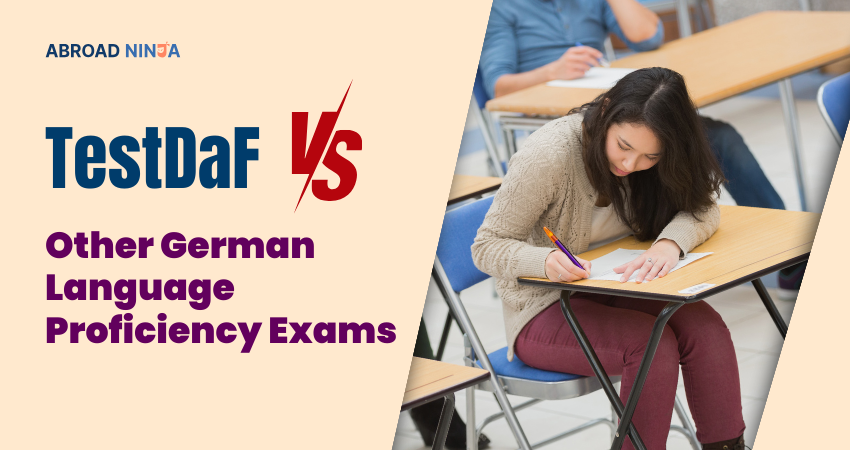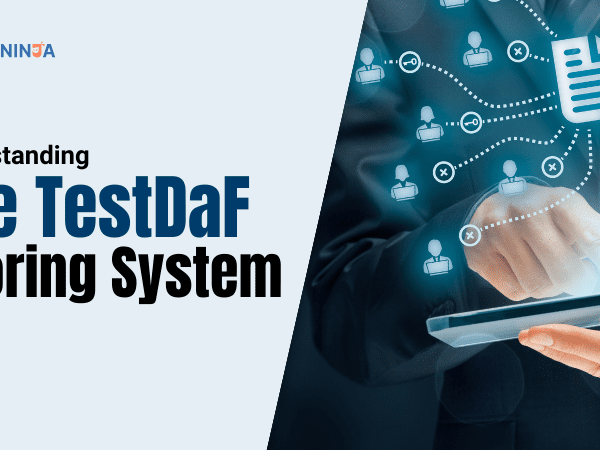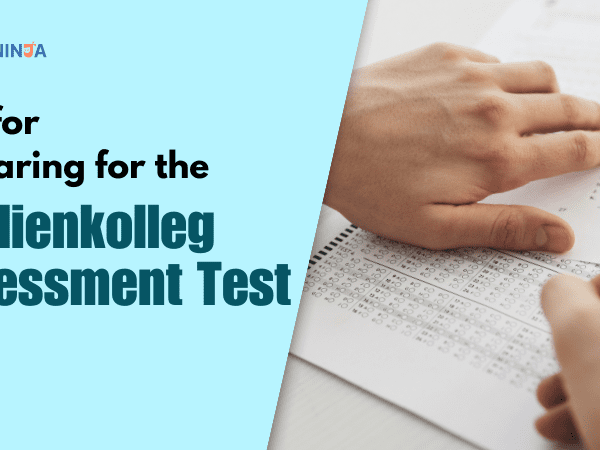The German language proficiency exam scene offers many options for those who wish to learn the language. Of these, TestDaF is a popular option. This article – “TestDaF vs. Other German Language Proficiency Exams” will look into the features of TestDaF. It will also compare it to other exams, giving essential info to those seeking to prove their German language skill.
TestDaF is an internationally accepted exam for testing language proficiency. It is widely accepted in Germany, making it a great option for students and professionals. It has four sections: reading, listening, writing, and speaking. Each section tests different language abilities, ensuring a thorough evaluation.
Besides TestDaF, there are other German language proficiency exams. For example, the Goethe-Zertifikat exams from the Goethe Institute. These exams come in different levels and concentrate on assessing communication skills in everyday life. Unlike TestDaF, which focuses on academic proficiency, Goethe-Zertifikat exams are more practical.
Another exam is the Telc Deutsch exam series by telc GmbH. These exams assess reading, listening, writing, and speaking ability through tasks. They are often used for immigration or job requirements in Germany.
Think about your goals and requirements before deciding which exam to take. If you want to pursue higher education or a job in Germany, TestDaF might be the best choice because it’s widely accepted in the country.
But if you want to focus on daily conversations and language fluency instead of school or jobs, Goethe-Zertifikat or Telc Deutsch might be better.
In the end, each exam has its own benefits and goes with different goals. Consider your objectives and the specific needs of your target institutions or employers to help you choose the right exam.
TestDaF vs. Other German Language Exams!
Background on Language Proficiency Exams
Language proficiency exams are essential for showing one’s command over a language. They offer an objective evaluation of a person’s linguistic abilities. These exams prove language proficiency and help individuals get educational or professional opportunities abroad.
When it comes to German language proficiency exams, TestDaF stands out. It is a standardized exam created for non-native speakers wanting to study or work in Germany. TestDaF measures four language skills: reading, writing, listening, and speaking. Numerous universities in Germany recognize this exam and use it as an admission requirement for various academic programs.
What makes TestDaF unique from other German language proficiency exams is its focus on academic German language capabilities. While other exams like Goethe-Zertifikat and telc Deutsch assess practical everyday language usage, TestDaF checks an individual’s ability to comprehend and use German in academic settings. This makes it particularly helpful for those seeking higher education or research opportunities in Germany.
Pro Tip: To do well in TestDaF, practice all four language skills regularly. Use resources such as sample papers, online exercises, and mock tests to understand the exam format and enhance your performance.
Overview of TestDaF
To gain an understanding of TestDaF and how it compares to other German language proficiency exams, delve into the section “Overview of TestDaF.” This section will explore the purpose and format of TestDaF, as well as the scoring and evaluation methods employed.
Purpose and Format of TestDaF
TestDaF evaluates the German language skills of non-native speakers who want to study or work in Germany. Its format includes four sections: Reading, Listening, Writing, and Speaking.
The Reading section assesses comprehension by having participants read texts and answer questions. Listening tests listening abilities with audio recordings and comprehension-based tasks. Writing tests writing abilities with tasks such as letter writing or essay composition. Speaking evaluates oral communication skills through conversations and a prepared presentation.
TestDaF measures more than just linguistic knowledge. It evaluates the ability to apply it in practical situations too. That is why universities and employers use TestDaF to identify proficient German speakers.
Pro Tip: Become familiar with the requirements and structure of each section before taking TestDaF. Do practice regularly to better your language skills and be ready on test day.
Scoring and Evaluation of TestDaF
TestDaF is evaluated with a thorough process that assesses language proficiency. The scoring system considers different aspects, making it fair and precise.
To comprehend the scoring and evaluation better, the table below displays the major components and their corresponding criteria for TestDaF:
| Component | Scoring Criteria |
|---|---|
| Reading Comprehension | Points are given based on difficulty of correct answers. |
| Listening Comprehension | Points are given for correct answers in multiple-choice format. |
| Writing | Essays are assessed by trained raters, using specific criteria. |
| Speaking | Fluency and content are evaluated. |
In addition to these, TestDaF considers grammar, vocabulary, and overall proficiency. The scores from each component are then combined to determine the performance.
Also, TestDaF provides exact measurements of language skills according to six levels from the CEFR. This enables universities and institutions to accurately judge candidates’ language abilities while admitting students and hiring professionals.
TestDaF can be extremely useful for someone who is looking for opportunities in German-speaking countries or higher education programs taught in German. It offers an objective evaluation of language proficiency, which can help individuals stand out from the crowd.
Don’t miss out on the advantages TestDaF has to offer! If you are planning to study abroad or progress in your professional career, TestDaF certification can provide you with numerous options. Make a move towards success by registering for TestDaF today!
Also Read: Study in Germany for Indian Students
Comparison between TestDaF and other German Language Exams
To better understand the comparison between TestDaF and other German Language Proficiency Exams, delve into the section “Comparison between TestDaF and other exams.” Explore the similarities between TestDaF and other exams, as well as the differences. This provides a comprehensive overview of the distinct qualities and features of each exam.
Similarities between TestDaF and other exams
The TestDaF exam has lots of things in common with other German language proficiency exams. Being aware of these similarities can help test takers be better prepared for the TestDaF and other related exams.
So, let’s make a table to display the similarities between TestDaF and other exams:
| Aspect | TestDaF | Other Exams |
|---|---|---|
| Test Format | Multiple choice | Multiple choice/Free response |
| Language Skills Assessed | Listening, reading, writing, speaking | Listening, reading, writing, speaking |
| Proficiency Levels | Aiming for B2/C1 | Varies depending on the exam |
| Exam Duration | 3 hours and 10 minutes | Varies depending on the exam |
Besides these general similarities, there are also exclusive details for each exam that should be taken into account. For instance, one exam might give more importance to written communication skills while another may emphasize oral fluency.
Now, here’s an interesting fact about this topic:
Did you know that the TestDaF was established in Germany in 1996? It was designed to measure the language proficiency of non-native speakers wanting to study at German universities. Since then, TestDaF has become very popular and accepted by many German universities as an entry requirement for foreign students.
By understanding the similarities between TestDaF and other German language proficiency exams, test takers can improve their strategies and enhance their performance. With its long history and widespread acceptance, TestDaF keeps on playing an essential role in allowing international education opportunities in Germany.
Differences between TestDaF and other exams
TestDaF is one-of-a-kind! Let’s take a look at how it stands out from other exams by creating a table:
| TestDaF | Other Exams | |
|---|---|---|
| Format | Computer-based & paper-based | Mostly paper-based |
| Level | Advanced learners | Various proficiency levels |
| Structure | Reading, listening, writing, speaking | Varies; may not include all skills |
| Scoring | 3-5 scale | Different scores for different exams |
TestDaF is special as it evaluates all four language skills. It’s also tailored to advanced learners looking to study or work in Germany.
Content and Structure
The TestDaF and other German Language Proficiency Exams have different content and structure. Let’s explore the details.
| Test Section | TestDaF | Other Exams |
|---|---|---|
| Reading | ✓ in both | |
| Listening | ✓ in both | |
| Writing | ✓ in both | |
| Speaking | ✓ in TestDaF | X in others |
TestDaF has a dedicated speaking section. This allows candidates to show their oral proficiency. It also uses formal and academic language, which is suitable for higher education and professional settings.
Difficulty Level
The difficulty level of TestDaF and other German language proficiency exams is very important. Let’s look deeper.
See the table below. It compares the difficulty level of TestDaF with other exams. It shows components and scoring systems.
| Exam | Difficulty Level | Components | Scoring System |
|---|---|---|---|
| TestDaF | Intermediate to Advanced | Reading comprehension, listening comprehension, writing, and speaking | Scale from 3 to 5 |
| Goethe-Zertifikat | Beginner to Advanced | Listening comprehension, reading comprehension, writing expression, and oral expression | Scale from A1 to C2 |
| Telc | Beginner to Advanced | Reading comprehension, listening comprehension, written expression, speaking | Scale from A1 to C2 |
Also Read: Germany Student Visa Success Rate
TestDaF is suitable for intermediate to advanced German speakers. Those who take the exam need a good understanding of grammar and vocabulary. They must be able to understand complex texts and conversations.
TestDaF has extra components. It tests writing and speaking skills. This gives a complete view of language proficiency.
TestDaF began in the 1990s. Universities in Germany and educational organizations worldwide worked together to create it. In 2001, it became an internationally accepted exam.
Picking the right exam is important. TestDaF, Goethe-Zertifikat, or Telc, each measure language abilities. This can show competency in German.
Recognition and Acceptance
TestDaF and other German language proficiency exams are accepted differently across institutions, organisations and countries. It’s key to know the acceptance level of these exams to pick the right one for you.
Let’s look into it with a comparison table:
| TestDaF | Goethe-Institut | DSH | |
|---|---|---|---|
| Recognition in Germany | Widely Accepted | Recognized Institution in Germany | Commonly Used |
| Accepted by Universities/Institutes | Various universities, language schools, and institutions offer recognition for TestDaF scores. |
TestDaF is also recognised beyond Germany. International universities use TestDaF for admission. So, this makes it a great option for those who don’t speak German but want to study abroad.
Plus, an EAQUALS study found TestDaF to be reliable and valid in assessing German language skills. This study looked at test materials, procedures, grading criteria, and test-takers’ performance. This strengthens TestDaF’s credibility.
Advantages and Disadvantages of TestDaF
To understand the pros and cons of TestDaF compared to other German language proficiency exams, dive into the advantages and disadvantages of TestDaF. Discover the benefits of TestDaF and its drawbacks, as it presents a solution for language assessment in a unique way. Explore the advantages of TestDaF and its potential downsides.
Advantages of TestDaF
TestDaF is an internationally-recognized language proficiency test. It offers many advantages!
- It’s accepted worldwide. This means people who pass it can access lots of educational and career opportunities.
- It evaluates all four language skills: reading, writing, listening, and speaking.
- It’s tailored for academic settings. It tests advanced language abilities needed for university courses.
TestDaF has other advantages too. For example, it uses a standardized scoring system. It also follows strict protocols for test integrity and security.
To show the impact of TestDaF, there’s Sarah’s story. She wanted to study engineering in Germany but needed proof of her German language skills. She passed TestDaF and universities accepted her. Now she’s happily studying engineering in Germany.
Disadvantages of TestDaF
TestDaF has its flaws too. Let’s have a look at a few of them:
- It’s pricey. The exam fee can be quite hefty, making it tough for some individuals to take it.
- Test centers are not widely available. This means that test-takers may need to travel far to reach a testing location.
- TestDaF has a strict time limit per section. This could cause additional pressure and stress, affecting performance.
- TestDaF is supposedly tougher compared to other language exams. This can be difficult for those who are not that proficient in German.
- Results can sometimes take a while to be released. Leaving test-takers hanging.
Interestingly, TestDaF was created by the Language Testing Center at the University of Hagen in 2001. Since then, it has become increasingly popular and is globally accepted as a reliable way to assess German language proficiency.
Also Read: Germany Immigration Process from India
Conclusion
TestDaF Exam is different. It keeps on playing an essential role in allowing international education opportunities in Germany. It evaluates your German language skills in a comprehensive way. It’s got content and structure like no other. Plus, it focuses on real-world situations. It’s helpful for learners at different levels of proficiency. TestDaF is a great way to show your language abilities. Pro Tip: TestDaF is a good option for people looking to assess their German language skills.
Frequently Asked Questions
1. What is the difference between TestDaF and other German language proficiency exams?
A. TestDaF is specifically designed for individuals seeking admission to German universities, while other exams such as Goethe-Zertifikat and Telc Deutsch offer general language proficiency certifications. TestDaF focuses on academic language skills required for higher education.
2. How is TestDaF scored compared to other exams?
A. TestDaF is scored on a scale from TDN 3 to TDN 5, with TDN 4 being the required minimum for university admission. In contrast, Goethe-Zertifikat and Telc Deutsch exams are scored on a pass-fail basis.
3. Are the content and difficulty level of TestDaF different from other exams?
A. Yes, the content and difficulty level of TestDaF are specifically tailored to the academic context and requirements of German universities. Other exams may cover a broader range of topics and have different difficulty levels.
4. Can I take both TestDaF and other German language proficiency exams?
A. Yes, you are not restricted to taking only one exam. Depending on your goals and requirements, you can choose to take both TestDaF and other exams to showcase your language proficiency from different perspectives.
5. Is TestDaF recognized internationally like other German language exams?
A. Yes, TestDaF is recognized by universities and academic institutions worldwide as a valid proof of German language proficiency. Similarly, Goethe-Zertifikat and Telc Deutsch exams are also widely recognized internationally.
6. Are there any specific advantages of taking TestDaF over other exams?
A. TestDaF offers the advantage of focusing specifically on the language skills required for academic success in German universities. Additionally, certain universities may require TestDaF scores for admission, making it the preferred choice for applicants.




